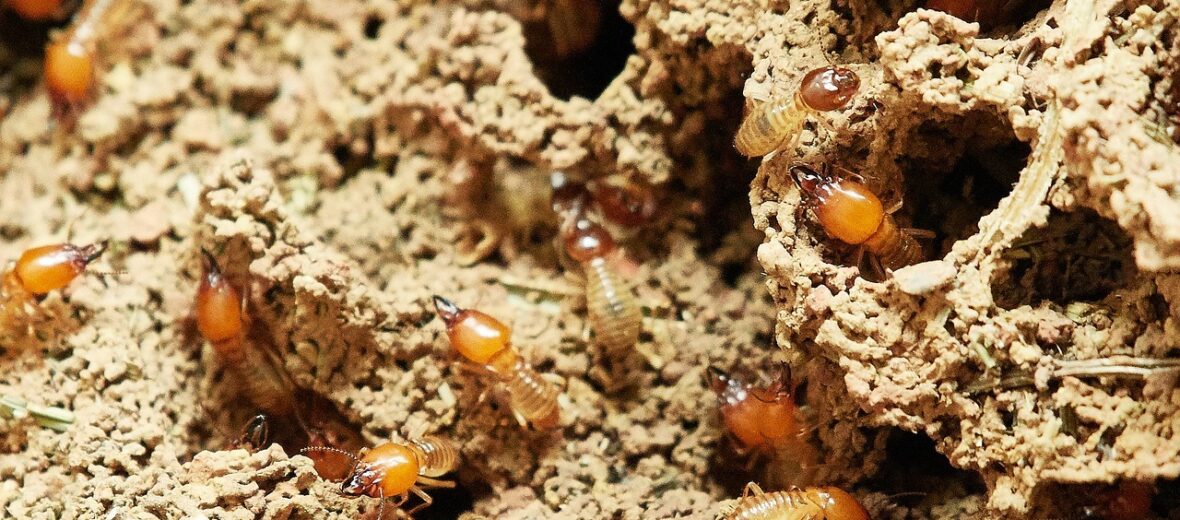
Found in Africa, Australia, and South America, the mound building termites are a lesson in industry. They never sleep. That’s right, they work 24/7 and only stop working when they die. What a life. With more then 2,500 known species of termites in the world, there are plenty out there to send shivers down your spine and, well, eat your house. Believe it or not, a colony of termites includes different castes, all with specific roles to play. They build giant nests that can house up to several million of these critters. Itchy yet? You will be. You’re welcome.
First the Stats…
Scientific name: Isoptera
Length: Up to 5 inches
Lifespan: Up to 50 years (queen) | Up to 2 years (worker)
Now on to the Facts!
1.) Termites feed on dead and decaying plant material like soil, leaf litter, and wood.
2.) The huge termite mounds seen in Africa, Australia, and South America, called termitaria, are built by fungus-growing termites – Macrotermes natalensis.
3.) Inside the mounds are extensive systems of conduits and tunnels that act as a ventilation system for the underground nest. To get good ventilation, the termites will build numerous shafts leading down to the cellar located beneath the nest.
4.) Here’s a tasty fact: Termites are rich in calcium, iron, fatty & amino acids, and proteins, making them a very nutritious food.
5.) Ants and termites are always at war with each other. Often times, when mounds are built next to each other, a daily war is waged that never stops till either the ants or the termites win.
But wait, there’s more on the mound building termites!
6.) The largest mound ever found housed over 3,000,000 termites!
7.) The world over, termites cause around $5,000,000,000 in property damage annually!
Did you know…?
Some mounds have measured up to 30 feet high!
8.) Believe it or not, termites are considered a keystone species. Without them many ecosystems may not exist.
9.) At the end of her life, the queen is literally licked to death by the workers. Once dead, they will feed a substance known as royal jelly to a nymph, causing it to develop into the new queen.
10.) When combined, the weight of all termites in the savanna actually exceeds the biomass of all the herbivores! This includes: antelope, buffalo, giraffes, and even rhinos.
But wait, there’s still more on the mound building termites!
11.) Just like ants, termites are eusocial. This means that they live in a caste system, and each caste has a different role. For instance, only worker ants have the capability to damage wood.
12.) Unlike ants that mate only once, the termite king and queen mate every day. The female is then prompted to lay up to 30,000 eggs each day. That averages around 165 million eggs in her lifetime.
Did you know…?
There are some species of termites that have been around for over 250 million years!
13.) The soldier and reproductive termites aren’t able to feed themselves. Therefor they have to depend on workers to feed them by regurgitating digested cellulose into their mouths. Yummy!
14.) If the mound ever falls under attack, the soldiers will tap on the mound, signalling the workers to seal off the queen and king to protect them.
15.) Termites are actually quite hygienic, grooming one another daily.
But wait, there’s even more on the mound building termites!
16.) Due to the ventilation system built into the mound, termite mound interiors stay at a consistent 87.8° F.
17.) The termite queen runs the colony via chemical signals called pheromones. The chemicals are sent across the colony by the sharing of food and saliva. These signals prompt her to produce termites of a certain caste. For instance, she may use these signals to determine if more soldiers are needed, after a loss in battle.
18.) Even though each caste is different in appearance, workers, king, queen, soldiers… they are all genetically identical.
Now a Short Mound Building Termites Video!
Also, check out the Critter Science YouTube channel. Videos added frequently!
Want to suggest a critter for me to write about? Let me know here.



